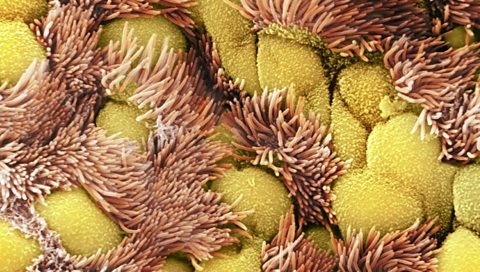Defence against infection
The body is constantly defending against attacks from pathogens.
A pathogen is a bacterium, virus or other organism that can cause disease. The first line of defence against infection stops the pathogens from entering your body.
These first lines are general defences, and are not specific to fight against certain types of pathogen. We call this non-specific, and they can be physical or chemical barriers.
Physical barriers against infection
Skin
The skin covers almost all parts of your body to prevent infection from pathogens. If it is cut or grazed it immediately begins to heal itself, often by forming a scab. This prevents infection as the skin acts as a physical barrier.
This physical barrier is formed from closely-packed epithelial cells. Epithelial cells are found in the skin and inner linings of the digestive and respiratory systems.
Parts of the body that do not have skin have developed other ways to prevent infection. For example, the eyes produce tears which contain enzymes. These enzymes are chemical barriers.
Nose
The nose has internal hairs, which act as a physical barrier to infection. Cells in the nose produce mucus. This traps pathogens before they can enter the lungs. When the nose is blown, mucus is removed and any pathogens are trapped within it.
Mucus and ciliated cells
The trachea runs from the nose towards the lungs. The cells that line the trachea also have hairs called cilia, which are much smaller than those in the nose. These are called ciliated cells. The ciliated cells waft their hairs in a motion like a Mexican wave at a football match and move mucus and pathogens upwards towards the throat where it is swallowed into your stomach. Other cells called goblet cells create the mucus in order to trap pathogens. The production of mucus in your airways is a physical barrier.
